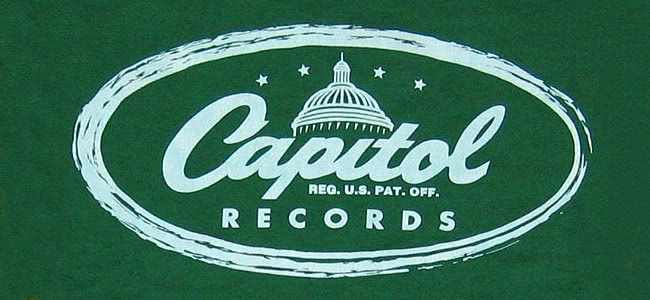The term “institution” is one of the most overused in the world, with one of the biggest culprits being the entertainment industry. Yet in looking at the talent roster of this world famous 70 year old company, to term Capitol Records as an institution doesn’t seem like such a stretch.
In the early 1940s Glen Wallichs owned Music City, the largest record store in Los Angeles. Through his ownership of the popular outlet he had gotten a hold of a large amount of shellac, the material that could be melted down into new records. After the war it had become a rare commodity, and one which Wallichs intended to make use of.
His colleagues, singer and songwriter Johnny Mercer and Buddy DeSylva, chose to invest it in the new project Mercer had brought forward, a record company.
According to former Capitol employee Don Hassler, Wallichs was a straight talking manager, and he decided to allow Mercer, a young musician, to lead the new company as long as he found the artists and left Wallichs to take care of the business.
Mercer and Wallichs co-founded Capitol Records in 1942 with its first office being located on the second floor of Music City.
One of the first albums released was in fact Mercer’s own. Singing his own compositions as well as songs written by others, he continued releasing new material throughout the remainder of the decade, producing some of Capitol’s first hits.“After the war shellac had become a rare commodity, and one which Wallichs intended to make use of.”
Later in 1942, the label had its first gold single with “Cow Cow Boogie” by Ella Mae Morse and by the late 1940s, their artist roster included Martha Tilton, Paul Weston and His Orchestra, Les Paul, Tex Williams, and Nat King Cole.
By 1946, Capitol had sold 42 million records. It was now one of the “Big Six” record labels, and was releasing 30-40 albums half yearly.
Of these records, around 25 were by pop artists and five to ten by speciality artists, including classical works by Brazilian composer Heitor Villo-Lobos and Werner Janssen, not to mention jazz records, including Miles Davis’ landmark 1957 album, Birth Of The Cool.
In 1949, having outgrown their previous home, the company purchased new studios on Melrose Avenue, right next to Paramount Pictures in Hollywood.
The company maintained a presence in New York with an office on 55th Street and the Golden State, and would occasionally make visits to record in New Orleans and Louisiana using mobile equipment.
Later that year Canadian Capitol was established and as they entered the 1950s, Capitol was making strides in the industry. Despite early successes, the blooming business was still considered an up and comer.
RCA and Columbia Records dominated the charts and were neck in neck for having the most hit records, but Capitol was tied for third place with another company called Decca Records, a label run by Bing Crosby.
It wasn’t until 1953 that Capitol would become a force to be reckoned with after they signed a key industry player.
Following a career dive in the 1940s due to a combination of changing tastes in music and an affair with Ava Gardner, Frank Sinatra no longer had a contract with Columbia Records, the label he called home while he had been the country’s biggest star.By 1946, Capitol had sold 42 million records. It was now one of the “Big Six” record labels, and was releasing 30-40 albums half yearly.
After his Oscar winning appearance in the film From Here To Eternity, Sinatra’s relevance and popularity returned, and not soon after, Capitol came knocking.
Ol’ Blue Eyes eventually signed with the label in 1953 which launched his career for a second time.
The success continued for the company as they began to accumulate a huge roster of well known stars; Judy Garland, Jackie Gleason, Shirley Bassey, Andy Griffith, and Dean Martin were all under contract.
In 1955 British music company EMI bought a 96% stake in Capitol for $8.5 million, marking the first of several attempts to acquire the successful company.
The British label had recently built a state-of-the-art studio on Abbey Road in London, and decided to do the same for Capitol on the intersection of Hollywood and Vine in California, the hub building that would become the iconic heart of the blooming company.
Capitol’s studio and office locations had been fragmented throughout the 1940s and early 50s, but the opening of the new “Capitol Tower” in 1956 brought this decentralisation to an end.
Their new world class headquarters resembled a stack of 45s on a turntable with wide curved awnings over windows on each story. The building was completed with a tall spike rising from its top, with a blinking light on its tip, spelling out the word “Hollywood” in Morse code.
The tower became known as “The House That Nat Built” thanks to Nat King Cole’s turn as the most successful artist at Capitol.
Sinatra’s album Tone Poems of Color was the first album to be recorded at the new facility, and he would make 18 more over the next decade with1955’s In the Wee Small Hours being his most acclaimed.
EMI’s major stake in the company gave Capitol the advantage of first refusal rights on all EMI artists meaning that Capitol would have access to a number of artists before EMI.
In 1963, when it came time for the Beatles to look for a label to support their entry into the American market, Capitol was one step ahead of the competition.
At the time the Fab Four were signed to British label Parlophone, a sister label to EMI, giving the Capitol team a first look at the mop-topped foursome. However the new sound was met with resistance, as Capitol believed The Beatles were ‘sonically unsuited’ to the US market.Their new world class headquarters resembled a stack of 45s on a turntable with wide curved awnings over windows on each story…
Nonetheless, they picked up the option and and in 1964, Beatlemania arrived in the US.
The company reworked the band’s original UK release, With The Beatles, removing a number of tracks, and brightening the sound using their now famous echo chambers located below Capitol Tower’s parking lots.
The result was a duophonic release of their original monophonic work, crafted for the American market (starting what would become a common practice) with the initial tracking split in two and the bass and treble boosted to produce a fake stereo sound. The band’s first American hit single was “I Want To Hold Your Hand”, which also included the songs “I Saw Her Standing There” and “This Boy”.
Rock was rising and its influence was evident after the company hired Artie Kornfield – who would famously go on to co-create the Woodstock Festival. Kornfield became Vice President of Capitol, the youngest person to ever hold the position, and the first rock’n’roll president in its history.
Throughout the 60s Capitol’s roster grew to include The Beach Boys, Glen Campbell, Steve Miller Band, People, and another integral British import, Pink Floyd.
In 1968 EMI increased its stake in the company to 98%, but after Capitol merged with Audio Devices, Inc. later that year, EMI’s stake dropped to 68%.
The 1970s began with a name change to Capitol Industries-EMI, Inc following an increased share buyout by the British company. EMI would purchase the remaining shares by 1976.
Artists such as Helen Reddy, Skylark, Blondie, Buzzcocks, David Bowie, and Natalie Cole made up the label’s roster during this time, and by the end of the decade, in 1979 Capitol Records was folded into the newly formed EMI Music Worldwide division.
The 1980 and 90s saw a turn for the label with contemporary pop artists sharing major billing with more alternative rockers. Among some of the acts on the billing were Tina Turner, Pet Shop Boys, Queen, Red Hot Chili Peppers, Iron Maiden , Coldplay, Radiohead, and Beastie Boys.
But soon the millennium would approach, and it was becoming apparent that despite some epic and diverse acts, the label hadn’t produced a #1 album since MC Hammer’s 1990 release, Please Hammer, Don’t Hurt Em.At the time the Fab Four were signed to British label Parlophone, a sister label to EMI, giving the Capitol team a first look at the mop-topped foursome.
The first album to break this streak was the self-titled record from former Destiny’s Child member LeToya in 2006. It topped the charts in its native US, and since then the label has continued to build a strong catalogue of popular artists.
Robbie Williams made the jump from his native Chrysalis Records to record a swing album with Capitol, in a clear nod to the label’s 50s roster. He made the move as a tribute to his hero Frank Sinatra, and Swing When You’re Winning hit #1 in the UK, and top ten in Australia and New Zealand.
More changes were looming for the iconic label. In 2006, EMI sold Capitol Tower, the company’s iconic headquarters, pocketing $50 million from it sale, and in 2007, EMI saw the merger of Virgin Records and Capitol into the Capitol Music Group, resulting in multiple divisions of the company being laid off and many artists cut from the roster.
Despite tough times, Capitol has continued to survive and holds the distribution rights for some of the most popular artists of our time, including Katy Perry who holds the record for the most number of #1 singles from an album, and Kylie Minogue, one of Australia’s most successful exports.
While the label has been home to many commercially decadent pop stars over the decades, it’s also hosted some of the most influential bands of the last 70 years on its legendary roster. With such a variety of sounds ranging from swing to jazz, and even broadway, Capitol leaves a lasting influence on the music industry.
The little company that began on the second floor of the Music City record shop will surely remain one of the biggest record labels in the world for generations to come.


































